I was going to talk about one of my favorite Chilean discoveries, the lomito sandwich, but I got into so much hot water yesterday for suggesting that all the ex-pat women in Santiago stay because of the bread and not the men (my favorite comment came from an outraged Chilean male calling himself “the dude” who wrote that he hopes I enjoy my stay in Chile “because when you go back to your country, you’ll realize that you’re still the virgin loser that left there in the first place”–how thoughtful, dude!) that I was afraid I’d also mess up writing about the lomito. So just to cover my virginal loser ass, I asked culinary expert Liz Caskey to address the subject.
In addition to leading culinary and wine tours of Chile, Liz writes a blog, Eat Wine, which is about all things wine and food in South America. So read what Liz has to say about lomitos (thank you, Liz!) and then check out her blog as she shares her favorite pours from Malbec to Carmenere and Tannat, food & wine pairing secrets, recipes, thematic tastings, visits with culinary artisans, muses, rants, and stories about the sweet life in South America.
Take an informal poll among Chileans of what food they crave when they are in country, out-of-country, any time of the day, and in many cases, would call the “unofficial” national dish of Chile, and they will tell you: El Lomito. This towering, mammoth pork sandwich is Chile’s most ubiquitous and beloved “fast food”. Chileans scarf them down enthusiastically and round-the-clock at joints throughout the country. Its popularity can only be compared to the hamburger in the US.
Of all the places in Chile that serve them up, none compare to Fuente Alemana off of Santiago’s central Plaza Italia. After all, they were born here. Even after 60 years of business, El Lomito is still king. In fact, I would say if you want to really understand classic Chilean cuisine, you must visit Fuente Alemana on your visit to the capital. Generation after generation has been well fed at this Santiago institution. It’s comfort food in the form of a sandwich.
Enter off the deafening Alameda, grab a stool around the U-shaped counter, and let the veteran waitresses/cooks, clad in white like nurses, attend to your every sandwich need. Not a whole lot has changed since opening. It’s pretty simple. Solo diners and friends come to scarf down 6-inch high sandwiches and frosty mugs of schop, draft beer. As you wait, the sizzle of the griddle and the waft of meat slowly browning, primes your taste buds for what’s to come. Tranquilo, sandwich heaven is only five minutes away. Observe as the cooks rhythmically assemble these gargantuan sandwiches from the central grill while taking orders, clearing plates, serving beer, and never missing a beat. An art? Absolutely—those ladies have been doing it for 30-odd years.
The Siri Brothers, who founded Fuente Alemana, are responsible for El Lomito’s creation. The sandwich is perhaps the greatest gastronomic homage paid to Chile’s Germanic roots. Marinated pork loin is slow- braised for six hours with aromatics and secret spices. The pork is hand-shaved into paper-thin slices that are kept warm in a flavored broth (the owner would not divulge exact ingredients) until use.
A typical lomito is layered with half a pound of pork on a freshly baked bun (6-inches wide). From there, order your fixings directly with the counter ladies. Try some of the perennial favorites: melted mantecoso cheese, mashed “green gold” (aka avocado), thick slices of fresh tomato, tangy sauerkraut, copious amounts of homemade mayo (a national passion). If you just want the italiano, you’ll get the lomito plus avocado-tomato-mayo. If you get the works, completo, they’ll serve you all of the above.
Do not, and I repeat, do not, attempt to eat this with your hands. The natural laws of the universe, err…gravity, make this an impossible feat. Use a fork and knife to tuck into this baby. If it seems peculiar that a simple sandwich could induce a nationwide fever, just lay into one and by the end you’ll understand. And probably either lick the plate clean or order another. Yes, it’s that good. –Liz Caskey

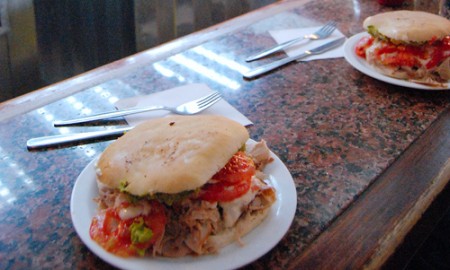
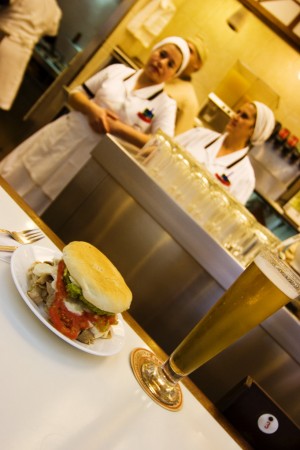
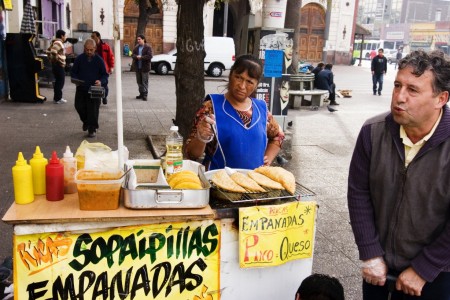
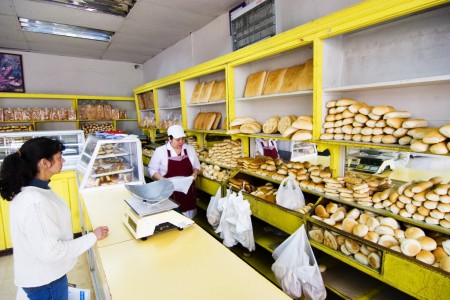
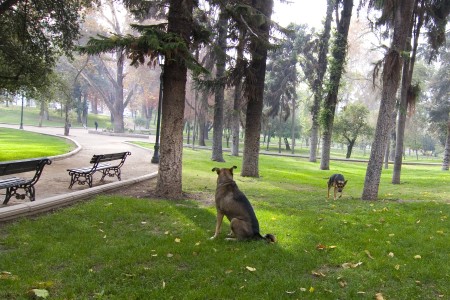
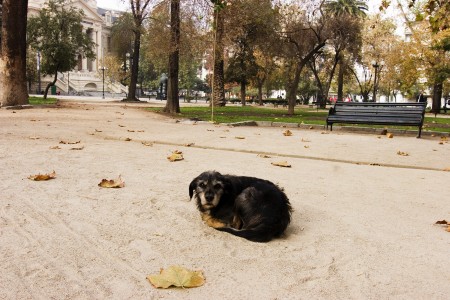


Recent Comments